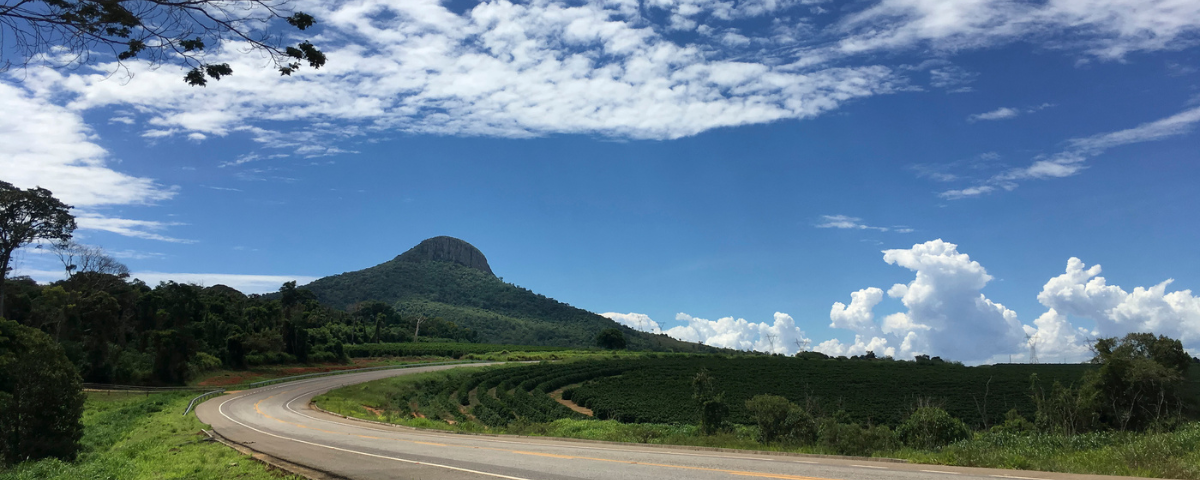The route will include the states of Rio de Janeiro, Minas Gerais and Goiás along with the Federal District in a tourist-cultural route that extends over 1,000 kilometres.
A new tourist and cultural route that will connect the attractions, history, culture and art of the State of Minas Gerais, Rio de Janeiro and Goiás and the Federal District. This is the proposal of “Via Liberdade” which, in commemoration of the 200th year of Brazil’s independence, will seek to take advantage of the various symbols contained throughout the 1,179-kilometre-long route of the BR-040 highway, 830 km of which lies in the State of Minas Gerais, by means of strategic actions and programs.
Launched in October 2021, at the Palácio das Artes, in the city of Belo Horizonte, the technical cooperation agreement was signed by the governments of the States of Minas Gerais, Rio de Janeiro and Goiás as well as of the Federal District, represented by the respective Secretaries of State for Culture and Tourism. The highlighted route includes world heritage sites, landscapes between mountains and sea, imperial cities, exuberant nature, horizons, state capitals, metropolises, typical foods, traditions, countryside, art and contemporaneity.
For the State Secretary Leônidas Oliveira, the road link between the three states and the Federal District coincides with tourist and cultural opportunities that are capable of synthesizing the identity and soul of what it means to be Brazilian, in addition to the fact that one of the most urgent concepts of contemporaneity was forged along its route, namely that of freedom. “The opportunities in connection with the Via Liberdade indicate a promising outlook, particularly for experience tourism. There are countless landmarks, historical landscapes, attractions, cultural spaces and museums that, in the synergy proposed by the new tourist route, should include programs enhanced by policies designed to promote tourism, culture and the creative economy. The new route will inaugurate a new era as the synthesis of an original Brazil”, stressed Oliveira.
In addition, the project provides for destination marketing activities aimed at supporting the commercialization of the territories involved with agencies and operators; the use of the tourism portals and social media of the states involved in order to boost virtual tourism; taking part in both domestic as well as international shows and events and strategic partnerships with the public and private sector along with those entities that represent tourism, such as the Federation of the State of Minas Gerais’ Tourist Circuits (Fecitur-MG), the Instituto Estrada Real (Royal Road Institute), Cemig and Copasa.
The Via Liberdade is one of the main actions foreseen under Secult-MG’s (the Secretary of State for Culture and Tourism/Minas Gerais) Reviva Turismo (Revive Tourism) program. Three strands of actions will be worked on, jointly, by the states and by the Federal District, namely structuring, signalling and promotion of itineraries and tourist destinations. Initially, the work on the Via Liberdade will be focused on increasing awareness of it among the population included in the route, and then on increasing awareness throughout the country as a whole.
Among the proposed actions are the holding of meetings aimed at researchers, artists and specialists with topics related to the milestones in Brazil’s history; the celebration of the bicentennial of Brazil’s Independence; the promotion of the project’s strategic destinations; seminars on heritage and tourism; destination marketing activities to support the commercialization of the territories involved with agencies and operators; the use of tourism portals and social media to boost virtual tourism; taking part in both domestic and international shows and events and strategic partnerships with the public and private sectors and those entities that represent tourism.
State Secretary Leonidas Oliveira explains that the Via Liberdade’s launch is an important moment for the country’s cultural and tourist geopolitics. “It is the union of four sister states, born of the same Portuguese and African mothers, and of the same indigenous land. It is the keynote of the next 10 years at a time when the trend is to travel by car. Where there is freedom, the freedom to travel, people want to go out. And the Via Liberdade, which concentrates 70% of the country’s historical heritage is the country’s largest culture and tourism hub,” he emphasized.
The Secretary of State for Tourism of Rio de Janeiro, Gustavo Tutuca, emphasizes that the route’s integration puts a number of items that are part of the country’s historical heritage on display for both the domestic and international tourism sectors, with the union of states that have a strong vocation for tourism. “People are increasingly looking to travel with their families by car. This initiative arose out of the dialogue between the State Secretaries and we identified that this route incorporates tourism assets and culminating with the celebration of the 200th anniversary of Brazil’s Independence, next year, and it will be a great success”, he added.
For the Secretary of Tourism of the Federal District, Vanessa Mendonça, the Via Liberdade brings new meaning to the route and offers an opportunity for cultural tourism to focus the eyes of Brazil and its population on the country’s natural, historical and human heritage, which each of the states represent. “With this initiative, we promote the local communities, of giving the visitors, who pass along the highway, an experience that they do not have and of recognizing each of the states and the Federal District’s history. It has historical value. It is a new hub of development,” she declared.
The president of Goiás Turismo, Fabrício Amaral, says that the initiative will highlights regional culture. “I am from the State of Minas Gerais, so it increases my motivation for this partnership. It is one of the largest cultural corridors in Brazil and the world. The State of Goiás has a piece of this history. The Via Liberdade along the BR-040 highway will create positive development opportunity scenarios”, he said.


